Do Dogs Pee and Poop at the Same Time? [Explained]
Have you ever wondered… do dogs pee and poop at the same time? This might seem like a peculiar question, but it can be a puzzling phenomenon for dog owners. In this article, we will delve into the subject to better understand the typical bathroom habits of dogs.
Don’t feel alone in wondering! As a family dog expert I can assure you I get asked questions like this all the time. Let’s learn more!
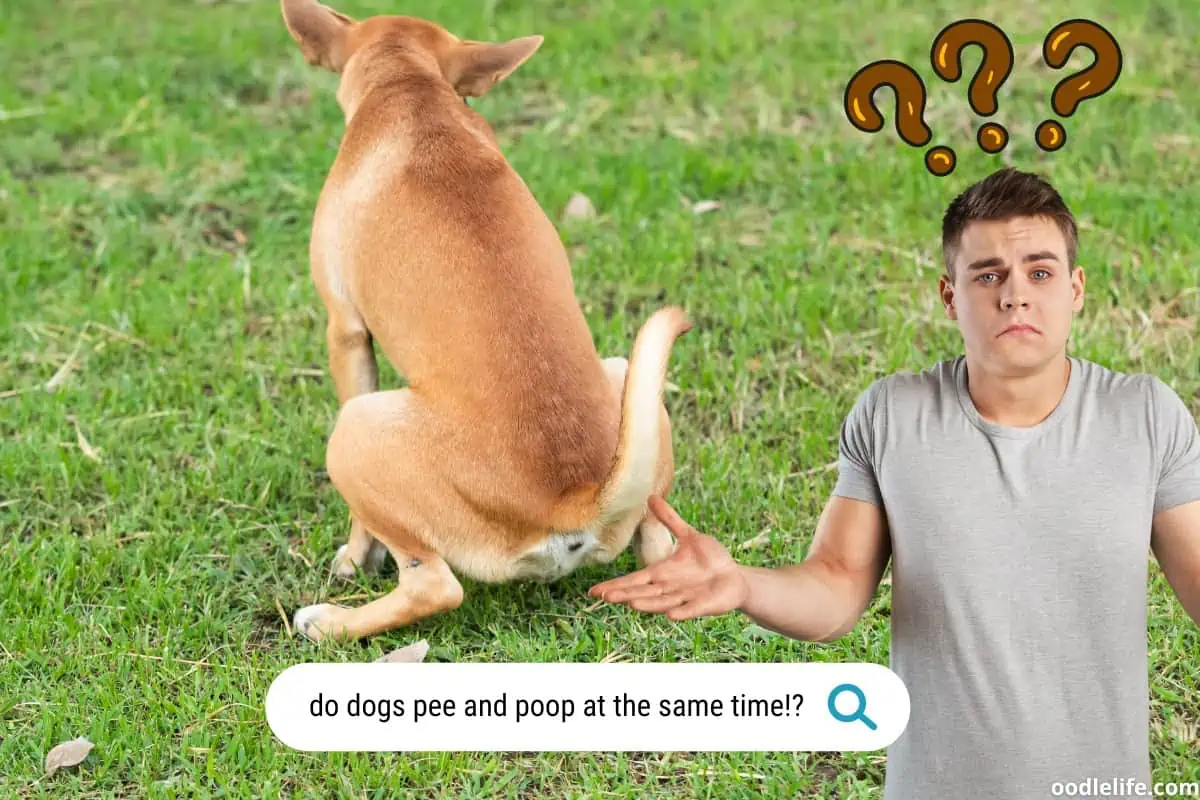
It’s important to note that not all dogs are the same, and their habits might differ depending on factors such as age, gender, and health. While there isn’t a one-size-fits-all answer to the question, we will explore general patterns and reasons behind why dogs may or may not relieve themselves simultaneously.
So, let’s embark on this intriguing journey into the little-discussed world of canine bathroom habits, filled with a dash of humor and some fascinating anecdotes. Get ready to gain insights about your four-legged friend that might just make your next walk together a little more interesting and informed.
5 Surprising Reasons Why Your Dog Might Pee and Poop at the Same Time
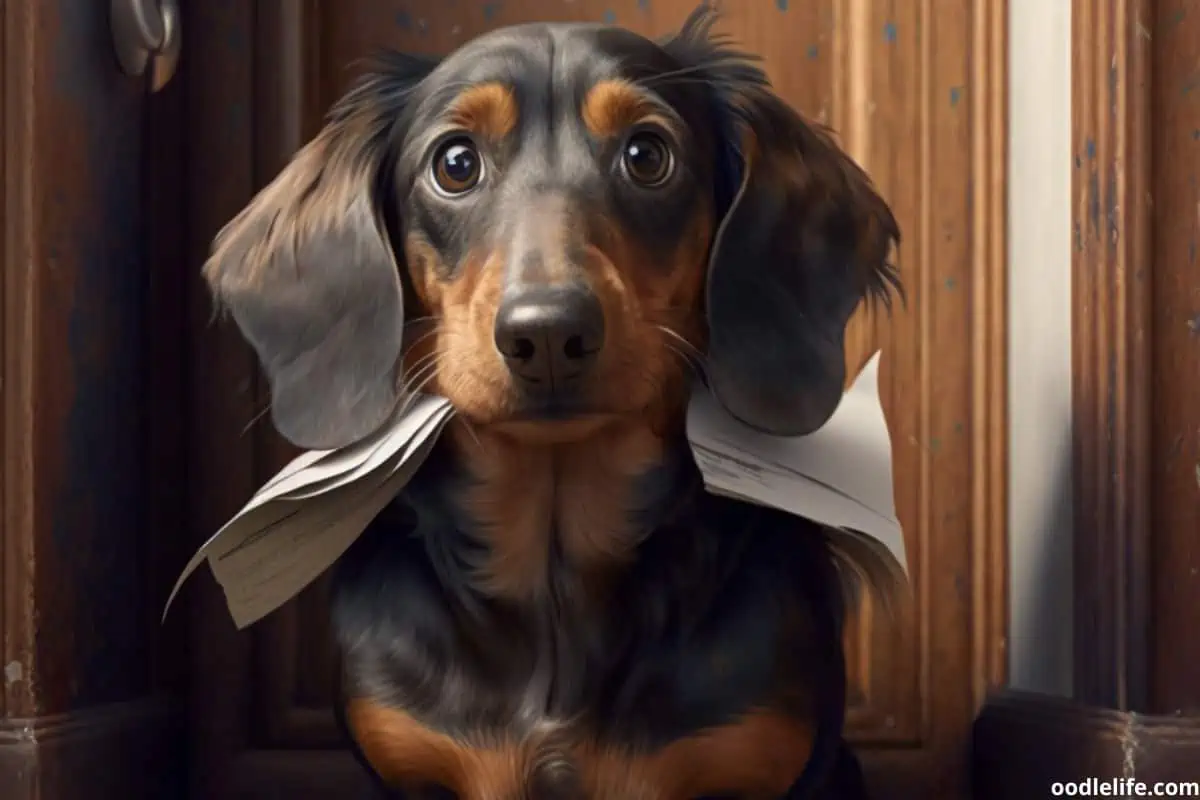
The Efficiency Expert: Some dogs are natural multitaskers, choosing to save time by peeing and pooping simultaneously. For example, you might notice that Rover squats to poop and then lifts his leg ever so slightly to pee as well, all while keeping his keen eyes on that squirrel across the street.
Marking Territory with a Twist: Dogs have a keen sense of smell and use it to mark their territory. Your dog might take this to the next level by combining urine and feces for a “double whammy” scent message. Picture Fido leaving a “combo package” on that particular tree he’s obsessed with, letting other dogs know who’s boss.
When Nature Calls, It Calls Loudly: Sometimes, your dog’s body just decides it’s time to go – and go big. Imagine Bella racing to her favorite spot in the yard, and in her excitement to relieve herself, she ends up doing both at once, like an erupting canine volcano!
The Oops-I-Didn’t-Mean-To Effect: In some cases, your dog might accidentally pee while pooping due to the pressure of bowel movements. Think of it as a canine version of a sneeze-pee, when your dog squats to poop and suddenly, an unexpected stream of pee joins the party.
Health-Related Double Duty: Certain health issues could lead to your dog peeing and pooping at the same time. For instance, gastrointestinal issues or urinary tract infections might cause Fluffy to lose control of both functions at once. If you suspect a health concern, a visit to the vet is in order.
Do Dogs NORMALLY Pee and Poop at the Same Time?
When it comes to our furry friends, some people might wonder if dogs pee and poop at the same time. The answer to this question can vary, depending on the dog and its individual habits.
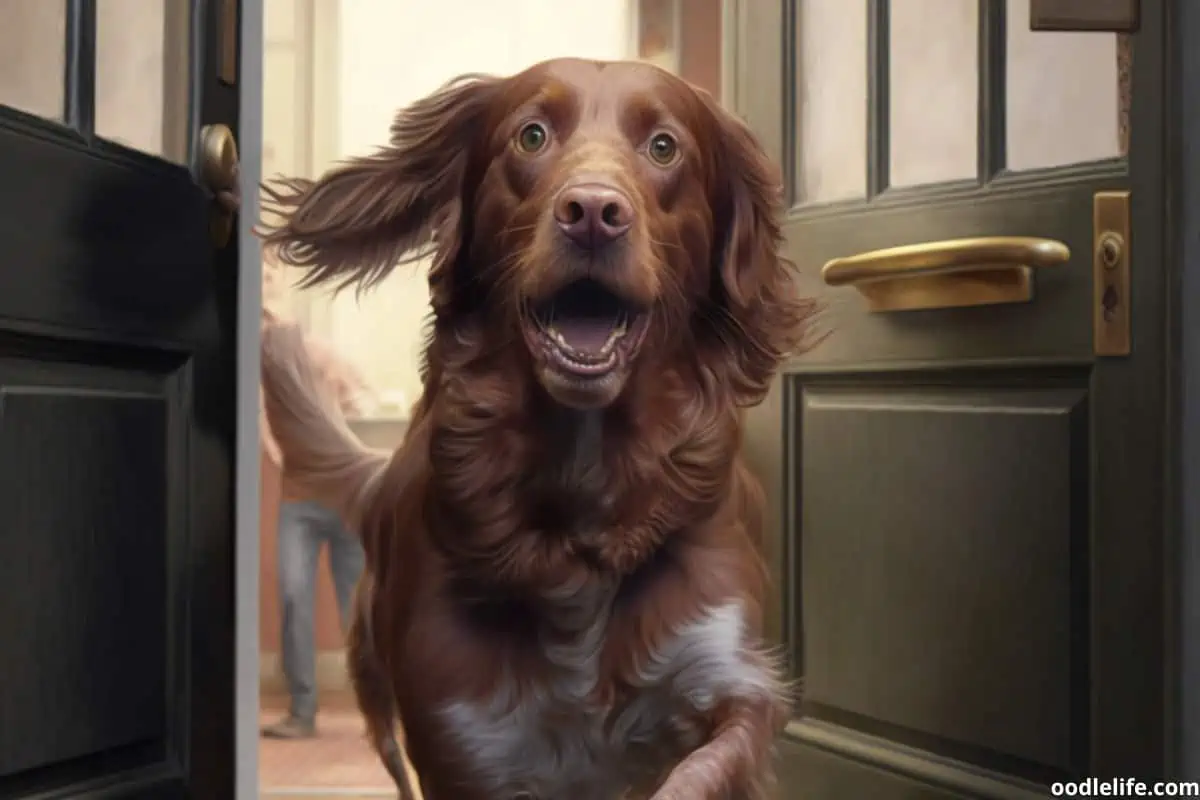
Generally, female dogs are less likely to pee and poop simultaneously. On walks, a female dog might pee at a particular spot, then walk another 100-150 feet before pooping. However, it is not uncommon for dogs, especially females, to urinate a bit before defecating. This behavior might not be due to the necessity for both actions to occur at the same time, but rather, the dog relieving itself as needed.
Male dogs might also exhibit differing habits, as some may choose to mark their territory with urine while taking care of their “number two” business. This can make it seem like they’re performing both functions at the same time, but it might just be their way of making their presence known.
There are several factors that can influence a dog’s bathroom habits, such as excitement, anxiety, or simply feeling the need to go. In some cases, dogs might pee and poop at the same time due to emotional triggers or a full bladder and bowel. It is essential for dog owners to keep an eye out for abnormal behavior and consult with a veterinarian if they notice any significant changes in their pet’s bathroom routine.
Our canine companions may make us chuckle with their quirky behaviors or leave us confused with their odd habits. When it comes to dogs peeing and pooping at the same time, each one has its own tendencies.
As dog owners, we’re there to support them, whether armed with a poop bag, cleaning up after their unique sense of “potty humor,” or merely offering a cheerful pat on the back for a job well done.
Factors Affecting Elimination Habits
![Do Dogs Pee and Poop at the Same Time? [Explained] 1](https://www.oodlelife.com/wp-content/uploads/2023/04/dogs-with-a-dog-walker.webp)
Age and Health
Dogs’ elimination habits may change as they age or due to health conditions. For example, puppies tend to eliminate more frequently because their bladders aren’t fully developed. Senior dogs may face urinary incontinence or reduced bowel control, which can lead to unfortunate accidents around the home.
Health issues such as bladder infections or gastrointestinal problems can also alter a dog’s elimination patterns.
Diet and Feeding Schedule
What your dog eats and when they eat it can have a direct impact on their elimination habits. A dog on a consistent feeding schedule will likely have more predictable bathroom breaks. On the other hand, if a dog is fed irregularly, it may be challenging to predict when they will need to go.
Low-quality food can result in more frequent elimination, while a high-quality diet with appropriate fiber content can lead to well-formed stool that is easier for your dog to pass. Additionally, the quantity of food intake, treats, and access to “forbidden” foods such as trash can affect your dog’s bathroom habits.
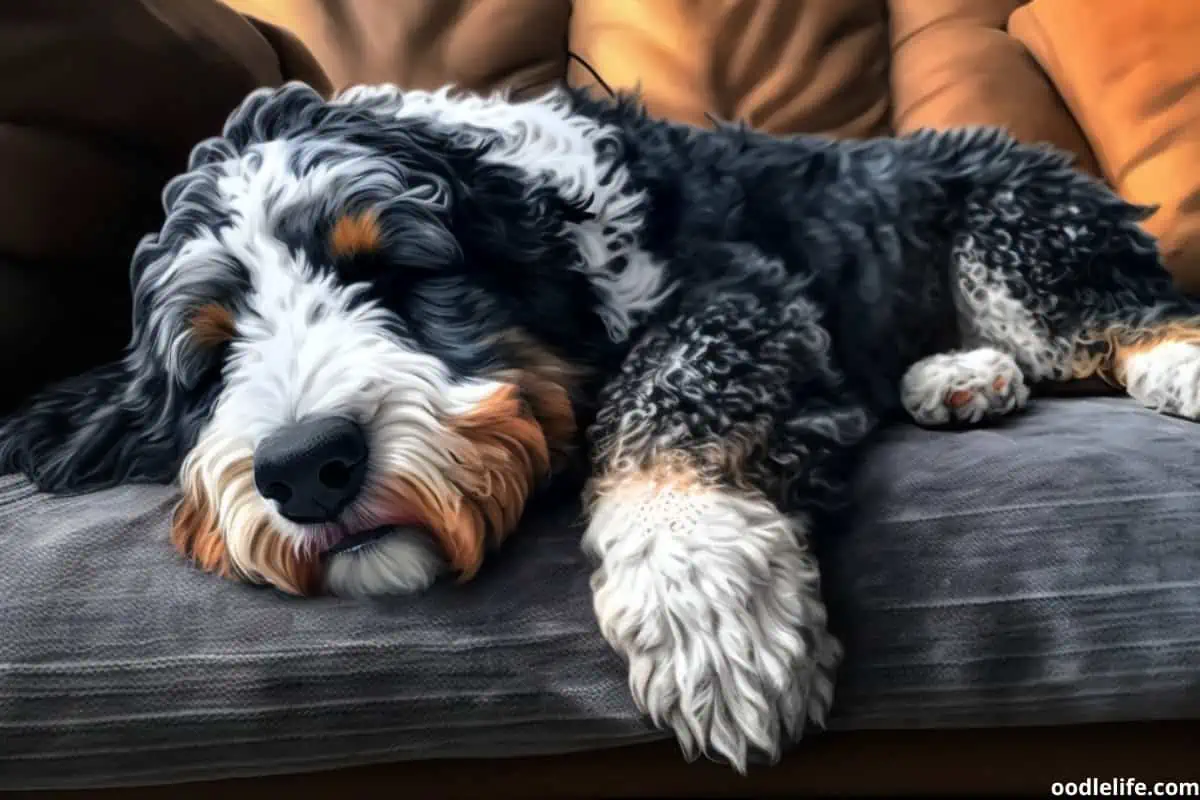
Behavioral Factors
There are various behavioral factors that may contribute to whether a dog pees and poops at the same time. Time constraints, anxiety, and stress can cause dogs to eliminate both ways at once. For instance, a dog who is rushed during bathroom breaks might learn to multitask, relieving themselves in one go to save time.
An example of anxiety-induced urination and defecation is the “kennel response disorder” (KDR). In unfamiliar or distressing environments, some dogs may combine their elimination habits as a coping mechanism.
Additionally, dogs may be triggered to urinate by the smell of fresh urine from other dogs, or they may feel the urge to mark their territory in certain locations. These behavioral factors may contribute to some dogs eliminating urine and feces at the same time, while others may do them separately.
Understanding Elimination Physiology
When discussing dogs’ elimination habits, it’s helpful to have a grasp on the underlying physiological factors at play. In this section, we explore the canine digestive and urinary systems, the primary drivers behind a dog’s peeing and pooping patterns.
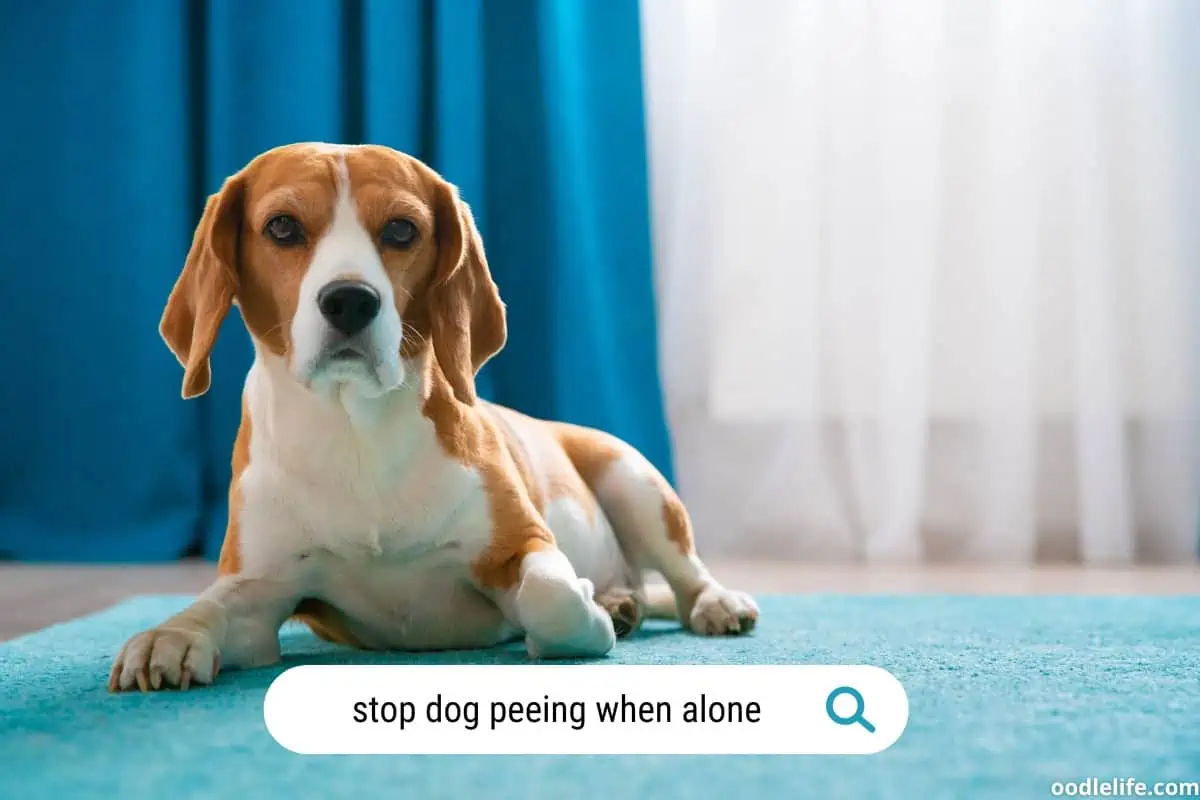
Digestive System
The canine digestive system, much like our own, starts with the mouth, where food is broken down as it’s chewed. Next, the food travels down the esophagus and enters the stomach, where stomach acids and enzymes break down the food further. Once it’s well-processed, partially digested food moves into the small intestine for nutrient absorption.
What is left – the undigested waste – then makes its way into the large intestine, specifically, the colon. Here, water absorption occurs, and the waste becomes more solid, eventually forming into feces. When your dog feels the urge, these fecal masses are evacuated through the rectum and anus, a process we know as pooping.
Urinary System
On the other hand, the urinary system is responsible for filtering and eliminating liquid waste from the body. It consists of the kidneys, ureters, bladder, and urethra. These organs work together to maintain proper fluid balance and remove harmful waste from the bloodstream.
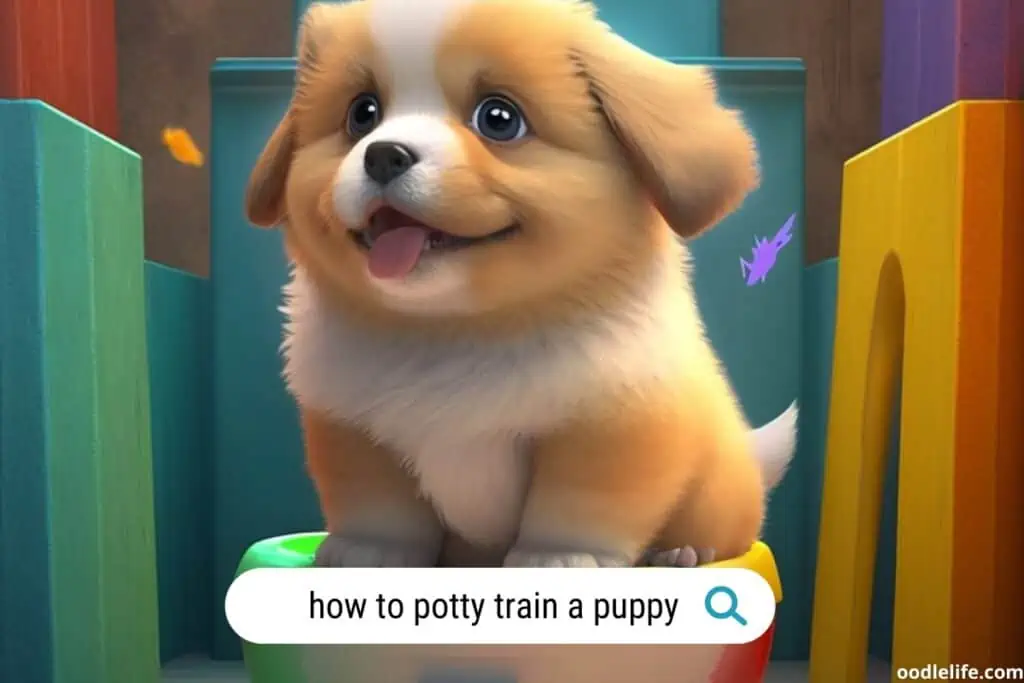
When the kidneys filter the blood, they produce urine, which is then carried by the ureters into the bladder. The bladder acts as a storage unit for urine until your dog feels the need to relieve itself. The urine eventually exits the body through the urethra as your furry friend pees.
With knowledge of these basic physiological processes, it’s no surprise that dogs often pee and poop at the same time, as the two systems ultimately lead to the same exit point. Nonetheless, while it may be a common occurrence, it’s not a steadfast rule that dogs will always eliminate both urine and feces simultaneously.
Factors such as diet, exercise, hydration, and individual anatomy can influence how often and when a dog pees or poops.
Monitoring Your Dog’s Elimination Patterns
Keeping an eye on your dog’s elimination habits can provide valuable insights into their health and wellbeing. Dogs, like humans, can have unique rhythms and tendencies when it comes to peeing and pooping, but understanding their patterns can help you identify any potential issues.
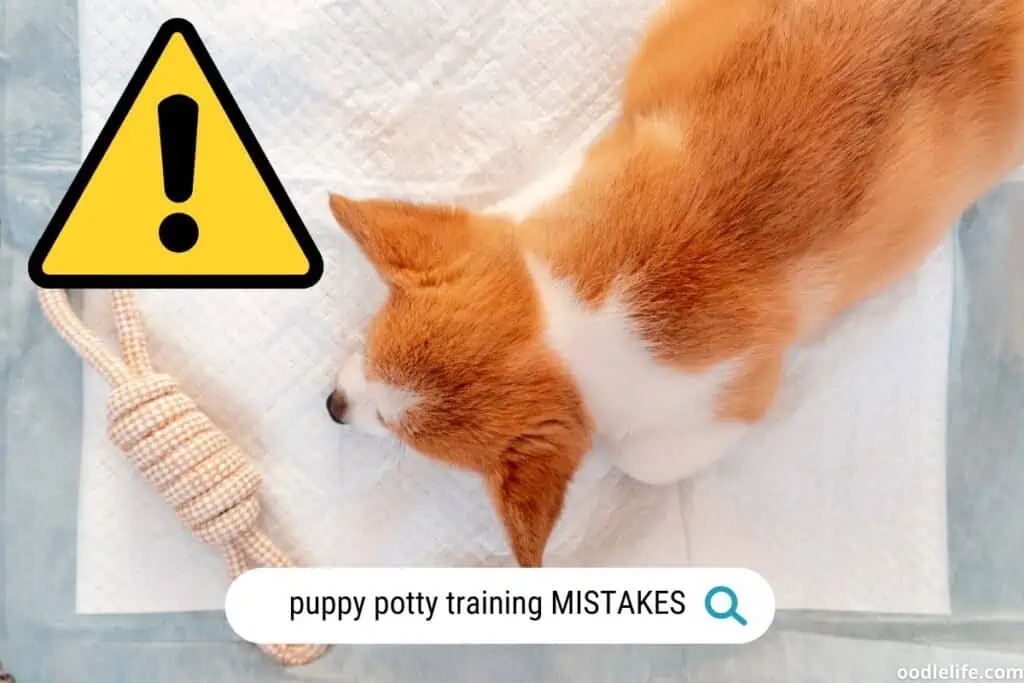
Although it may seem like a trivial task, tracking the frequency of your dog’s bowel movements can be crucial. Factors such as diet, exercise, and stress levels can all influence how often your dog eliminates waste. If you notice any sudden changes in frequency or consistency lasting more than a day, consider consulting your veterinarian.
For example, if your dog is consistently eating on a schedule and suddenly starts to poop less or more, this can be an indicator of a digestive issue or other health-related problem. Similarly, if their urine output seems abnormal or disproportionate to their water intake, it could be a sign of a urinary tract issue or a more general health concern.
To make things easier, create a simple log to keep track of your dog’s elimination habits. This can be done using a physical notebook, a spreadsheet, or any note-taking app. Record the following information:
- Date and time of elimination
- Location (indoors or outdoors)
- Type of elimination (urine or feces)
- Consistency and color of feces
- Amount of urine (if possible)
- Any noticeable differences or abnormalities
By closely monitoring your dog’s patterns, you can gain a better understanding of their normal routines and be better equipped to handle any changes that may arise. Just remember, nobody’s perfect – even Fido might have the occasional “oops” moment.
As long as you keep tabs on their habits and maintain a supportive environment, your dog will continue to love you unconditionally and, hopefully, do their business on a predictable schedule.
When to Consult a Veterinarian
As a responsible dog owner, it’s crucial to recognize when it might be time to consult a veterinarian about your dog’s bathroom habits. While it’s not unusual for dogs to occasionally pee and poop at the same time, there are certain situations where this behavior could signal an underlying health issue.
![Do Dogs Pee and Poop at the Same Time? [Explained] 2](https://www.oodlelife.com/wp-content/uploads/2023/04/beautiful-cartoon-collie-1024x683.webp)
For instance, if your potty-trained dog suddenly starts having accidents around the house and consistently pees and poops at the same time, this could indicate a medical problem, especially in older dogs. That’s when you should head to the vet for a checkup.
Here are some signs that it’s time to consult a veterinarian:
- Your dog has been potty trained but suddenly starts peeing and pooping indoors for no apparent reason.
- Your dog seems to be in pain or has difficulty while pooping or peeing.
- There are changes in the color or consistency of your dog’s urine or feces, such as blood or an unusual odor.
- Your dog’s bathroom breaks become increasingly frequent or less frequent than usual.
- Your dog is showing signs of lethargy, vomiting, or other unusual behavior alongside their bathroom habits.
Remember, it’s always better to err on the side of caution when it comes to your dog’s health. So, if you’re unsure whether their peeing and pooping habits warrant a trip to the vet, don’t hesitate to make the call. When it comes to our furry friends, it’s better to be safe than sorry!
FAQs and Conclusion
Q: Can a dog poop without peeing at all? A: Yes, dogs can certainly poop without peeing. It’s common for dogs to do one without the other, depending on their individual needs and habits.
Q: Is it normal for my dog to pee and poop at the same time only during walks? A: Dogs might combine the two actions during walks due to excitement, the need to mark their territory, or simply because it’s the only opportunity they have to relieve themselves.
Q: Should I be concerned if my dog has recently started peeing and pooping at the same time? A: If this behavior is new or unusual for your dog, it’s worth monitoring them for any other changes in habits or health. If you notice anything concerning, consult your veterinarian for guidance.
Q: Does age play a role in a dog’s ability to pee and poop at the same time? A: Age can be a factor, as older dogs may have weaker muscles or health issues that make it more challenging to control their elimination functions. However, each dog is unique, and age-related changes can vary.
In summary, it’s not typical for dogs to urinate and defecate at the same time. Different mechanisms govern these two actions within their bodies, and they usually occur independently. However, certain circumstances may cause a dog to do both simultaneously, such as feeling rushed, having bladder control problems or not spending enough time outdoors.